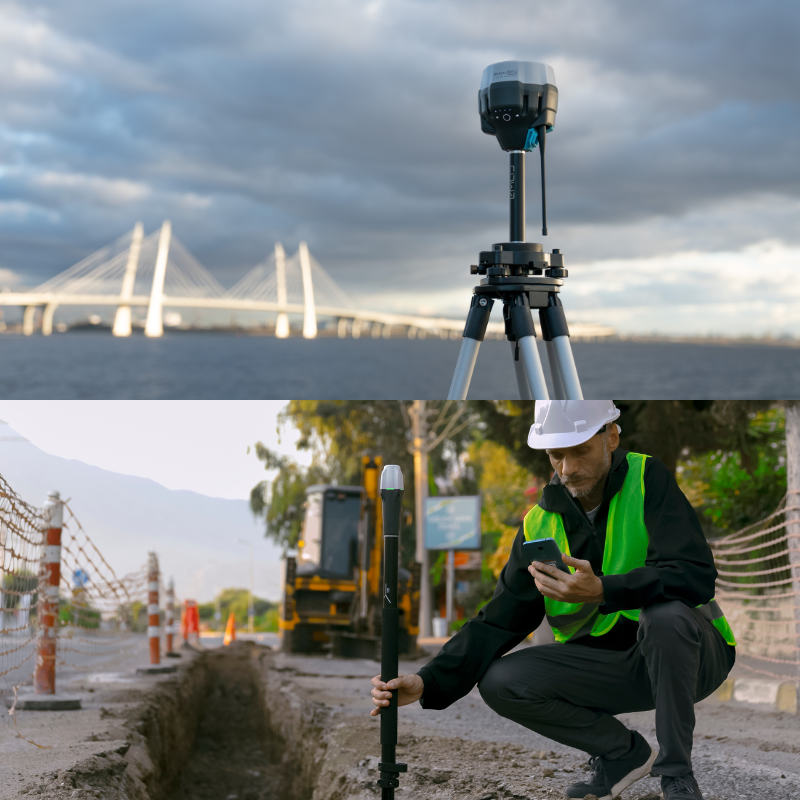
Products
Reach RS2+ vs Reach RX: Which Emlid GNSS receiver is best for you?
Comparison between Emlid's two new GNSS receivers: The Reach RS2+ and Reach RX. Learn about their key features and differences to help you decide which one is best for your land surveying applications. ... Read More

Emlid has released two new GNSS receivers: The Reach RS2+ and Reach RX. Find out which is best for you;
The Reach RX is a pocket-sized and simple-to-use rover for RTK surveys in urban areas with cellular network coverage;
The Reach RS2+, which is an evolution of the industry-leading Reach RS2, is better suited to more types of jobs, especially for professionals who survey in areas with no internet and require RTK, PPK, and PPP;
Both GNSS receivers enable you to survey with centimetre precision;
Emlid GNSS receivers are available from heliguy™, as part of our end-to-end surveying ecosystem.
Two new Emlid GNSS receivers have been released, adding the Reach RX and Reach RS2+ to the product ecosystem.

The Reach RX is a high-performance, multi-band RTK rover with a focus on simplicity, which fits in a pocket for easily portability to survey with centimetre precision.
The multi-band, centimetre-accurate Reach RS2+ is an evolution of the industry-leading Reach RS2, featuring a built-in LTE modem to ensure high-speed and robust 4G connectivity to a corrections source; comes with dual diversity LTE antennas - compared to the RS2's one cellular antenna - for better cell reception on the edge of networks; and is packed with design improvements to enhance usability in the field.
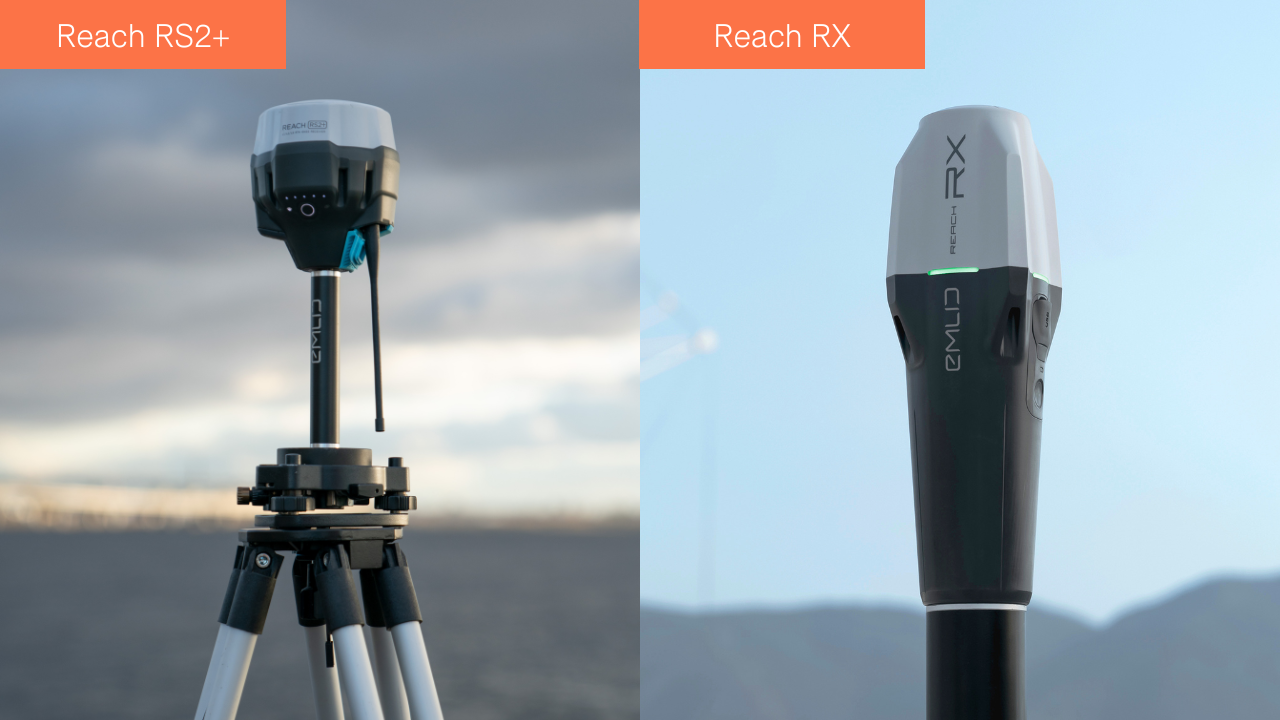
It's worth noting that users who survey with LoRa or 2G/3G internet connections can continue their work with the Emlid Reach RS+ (single band) and Reach RS2 (multi-band) receivers and do not necessarily need to upgrade their fleet. Emlid will continue to deliver firmware updates and provide full technical support for Reach RS2 and Reach RS+ receivers.
However, with the Reach RX and Reach RS2+ being the new additions to the Emlid ecosystem - and available from heliguy™ - it seems prudent to compare them to see what they bring to the table, identify their key features, and help you decide which is the right receiver for your workflow and use case.
Reach RS2+ vs Reach RX: Key Specifications
This table provides an overview of the key specifications of the Reach RS2+ and Reach RX.
Reach RS2+ | Reach RX | |
Correction Technique | RTK with precision H: 7 mm+ 1 ppm; V: 14 mm + 1 ppm. PPK with precision H: 5 mm + 0.5 mm; V: 10 mm + 1 ppm | RTK with precision H: 7 mm + 1 ppm; V: 14 mm + 1 ppm |
Base Mode | Yes | No |
Frequency Bands | L1/L2/L5 | L1/L2/L5 |
Time to FIX | Under 5 seconds | Under 5 seconds |
Data Logging | RINEX | No |
Connectivity | Corrections via Bluetooth from LoRa radio; LTE modem; Wi-Fi; Bluetooth; Serial | Corrections via Bluetooth from smartphone/controller |
Position Output | NMEA | NMEA |
Dimensions | 126 x 126 x 142 mm | 172 x 51 x 51 mm |
Weight | 950 g | 250 g |
IP Rating | IP67 | IP68 |
Operating Temperature | -20°C to 65°C | -20°C to 65°C |
Battery Life | 22 hours on one charge | 16 hours on one charge |
Price | £2,199 | £1,599 |
Reach RS2+ vs Reach RX: Defining Your Workflow
Your use case and workflow are key factors when considering which receiver is best for you.
If you need an easy-to-use rover for RTK (Real-time Kinematic) surveying on sites with internet access, then the Reach RX ticks plenty of boxes. It is compact and lightweight, so you can take it wherever you go.
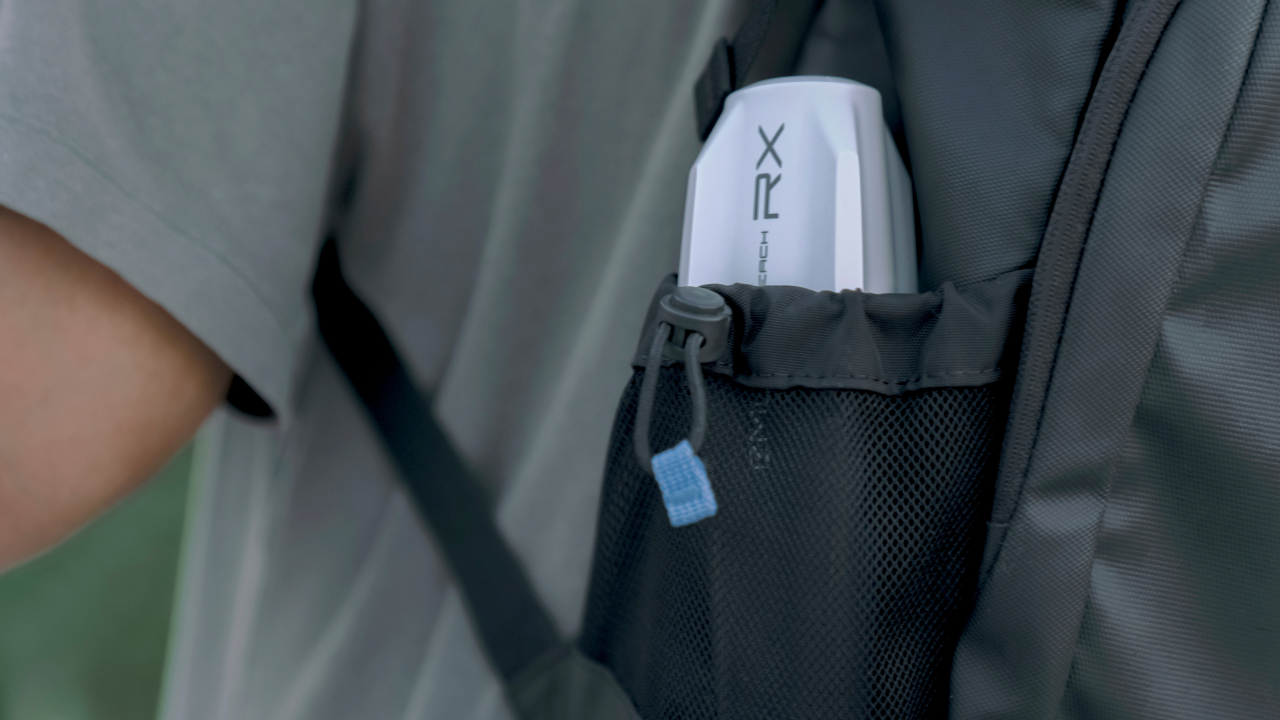
Reach RX works with any corrections network (NTRIP). Paired with the ReachView 3 app, it’s suitable for areas with cellular coverage.
ReachView 3 uses the internet connection on your phone or tablet to access NTRIP corrections and send them to Reach RX over Bluetooth. With Reach RX, you can get precise data in RTK mode on your survey site, and you may export it for further use in CAD or GIS software. No post-processing is required.
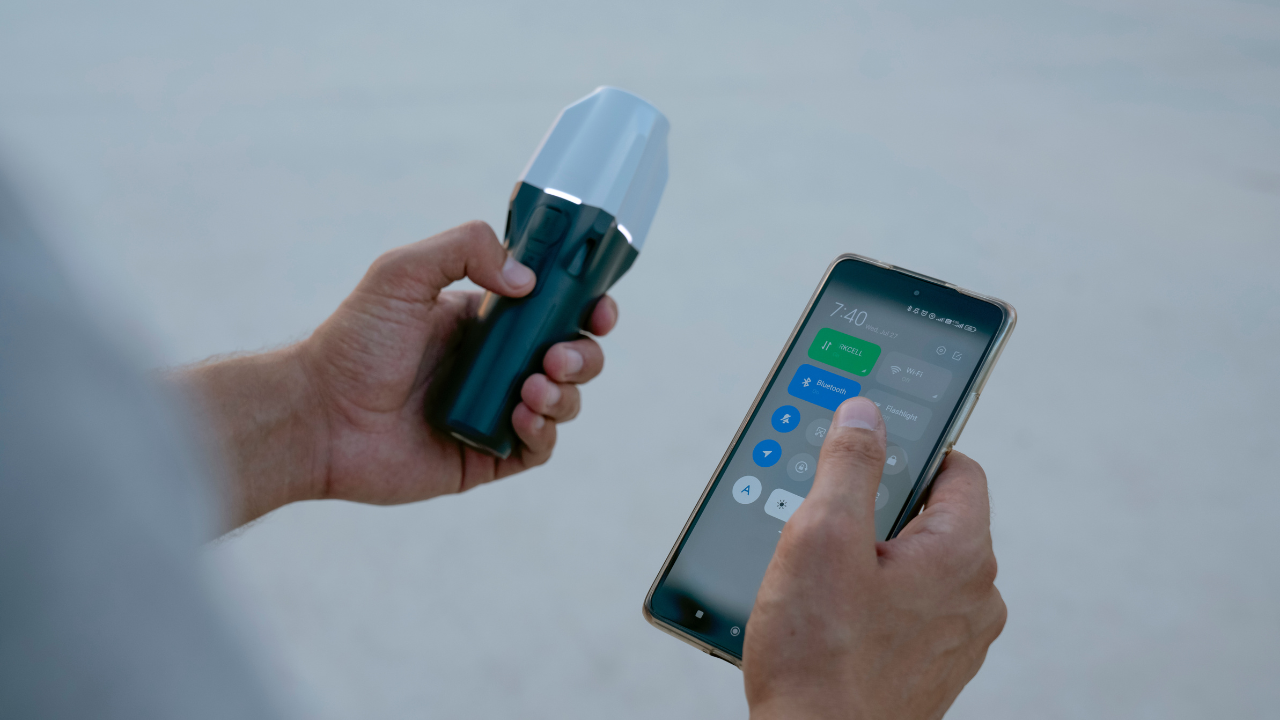
Meanwhile, Reach RS2+ is a full-fledged receiver applicable for more types of jobs. If you survey in areas with no internet and use different techniques, such as RTK, PPK (Post-processed Kinematic), and PPP (Precise Point Positioning), then the Reach RS2+ is the option for you.
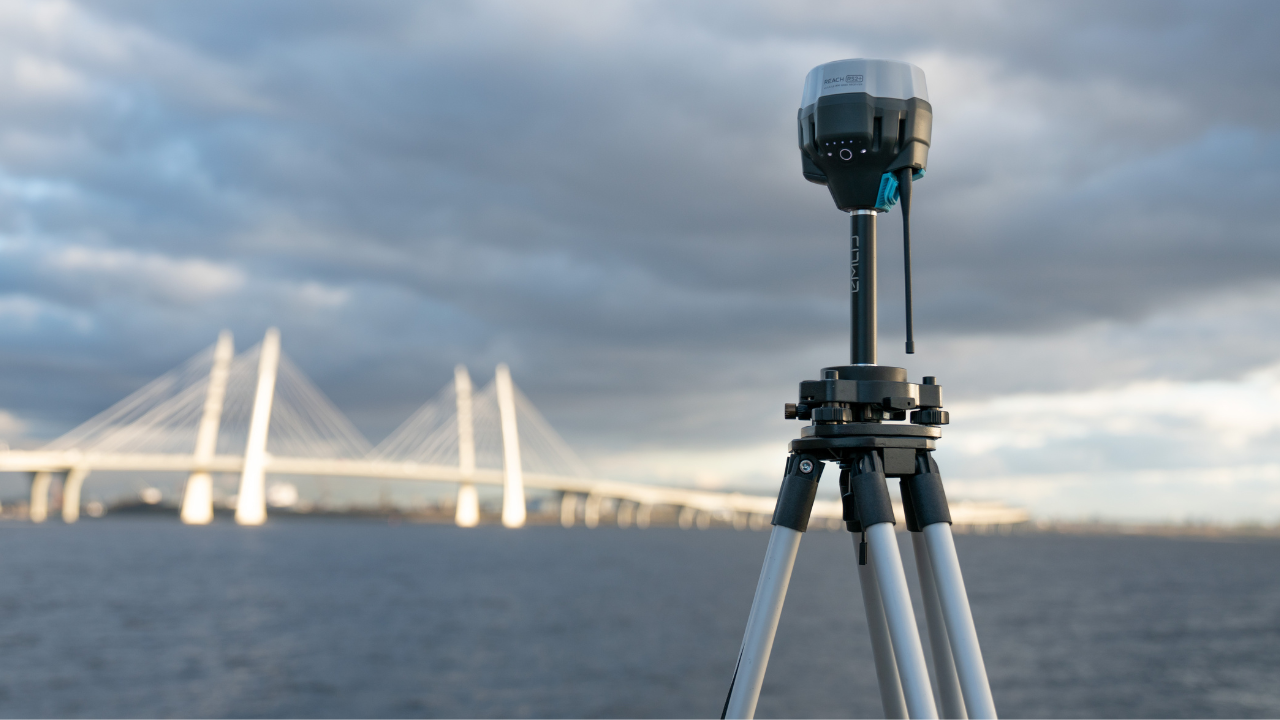
When mapping in PPK, the RS2+ enables you to log RINEX data for further post-processing. You can also seamlessly use RINEX logs with OPUS, AUSPOS, and popular PPP services.
For an RTK survey in a location with cellular coverage, use Reach RS2+ with a built-in LTE modem to set up a connection over NTRIP. When there’s no internet on your job site, you can survey with two Reach RS2+ units connected via LoRa radio.
Base And Rover Setup
Recognising the difference between base and rover capabilities is an integral part of choosing the right receiver for your job.
Reach RS2+ can act as a base transmitting GNSS corrections and as a rover receiving the corrections from another source.
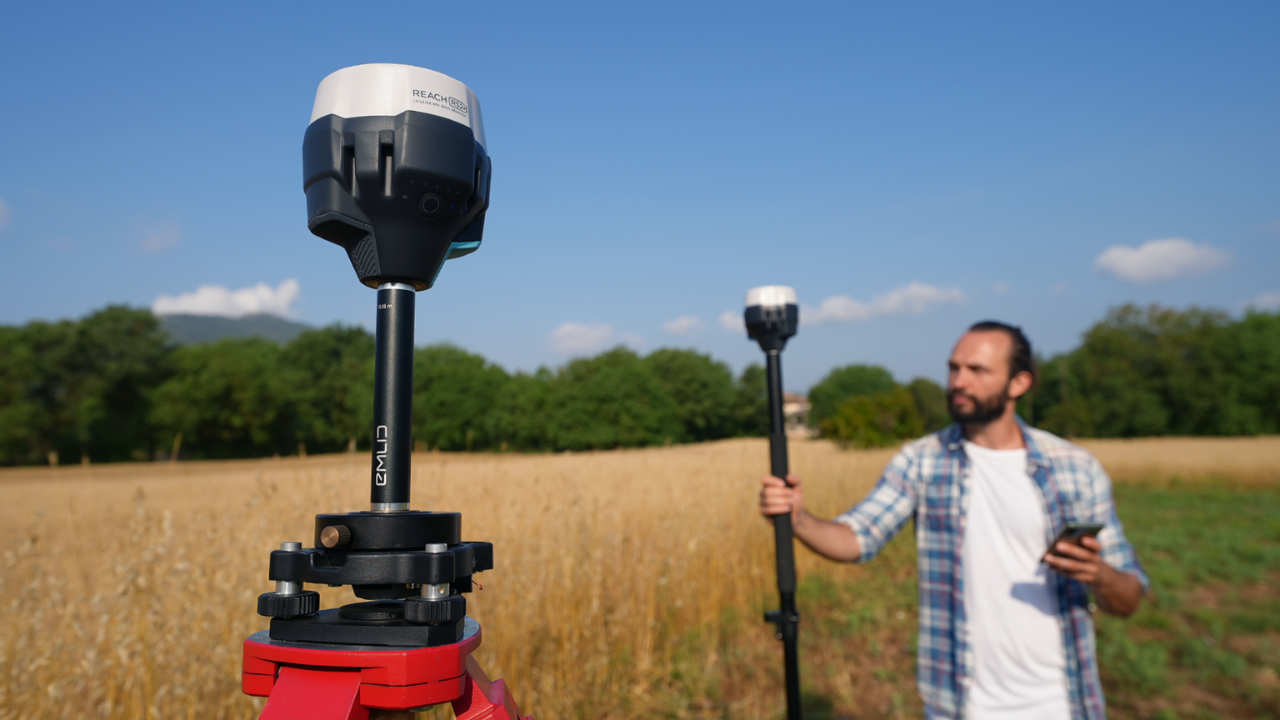
This enables you to survey with Reach RS2+ in multiple scenarios, for example:
2 x Reach RS2+ units as a base and rover connected via LoRa;
2 x Reach RS2+ units connected via Emlid NTRIP Caster;
Reach RS2+ as a base for another receiver or RTK-capable UAV;
Reach RS2+ as a rover connected to a corrections network.
In comparison, Reach RX is a network rover that needs GNSS corrections to achieve cm-precise positioning. To stream corrections for Reach RX, you can apply one of these scenarios:
Connect Reach RX to any public NTRIP service;
Use Reach RS2 or RS2+ as a base and free Emlid Caster as a way to send the corrections for Reach RX.
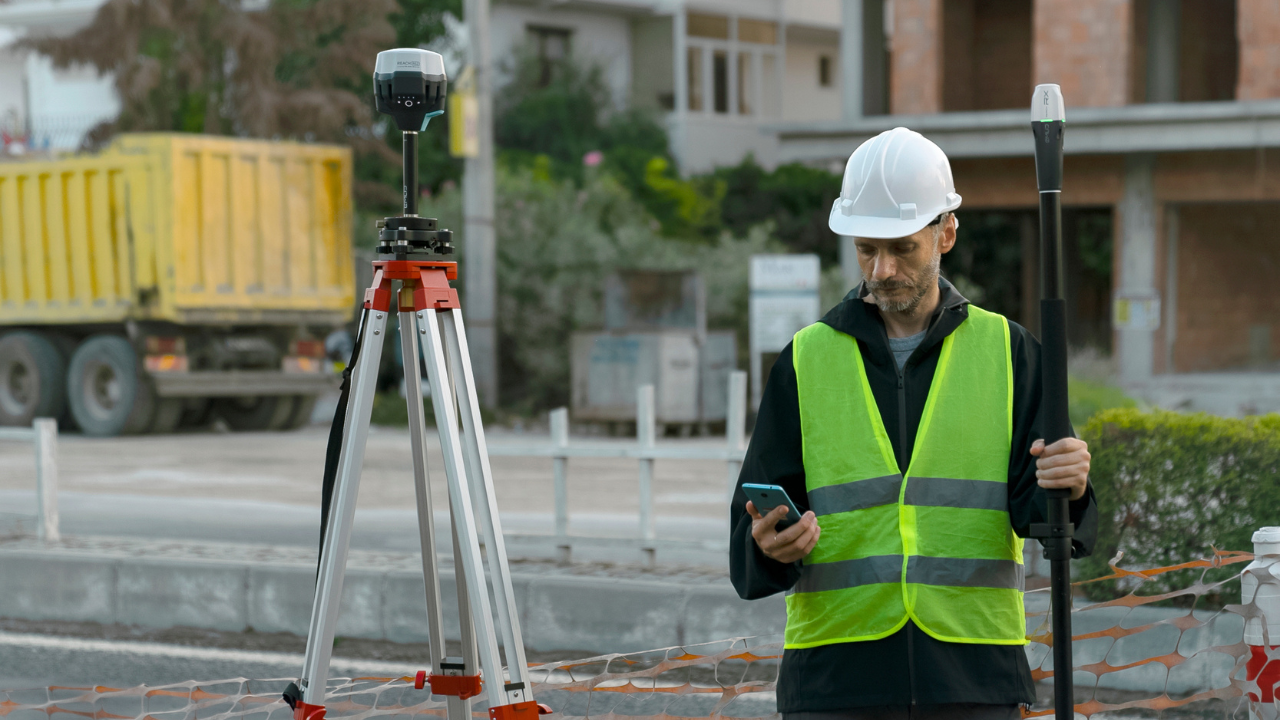
Reach RS2+ vs Reach RX: Configuration
Reach RX is designed to simplify data collection, so you don’t have to spend much time on the receiver’s setup: Simply enter the credentials for your corrections network. It means there is zero configuration required which removes the chances of setting-up incorrectly.
Ease of use is also one of the major features of the Reach RS2+. This professional fully-featured receiver provides the option to choose your settings depending on your workflow. If you need advanced GNSS settings such as SNR or Elevation masks, you can configure them in the ReachView 3 app.
Reach RS2+ vs Reach RX: Summary
So, the Reach RX or the Reach RS2+: Which one should you choose for land surveying applications?
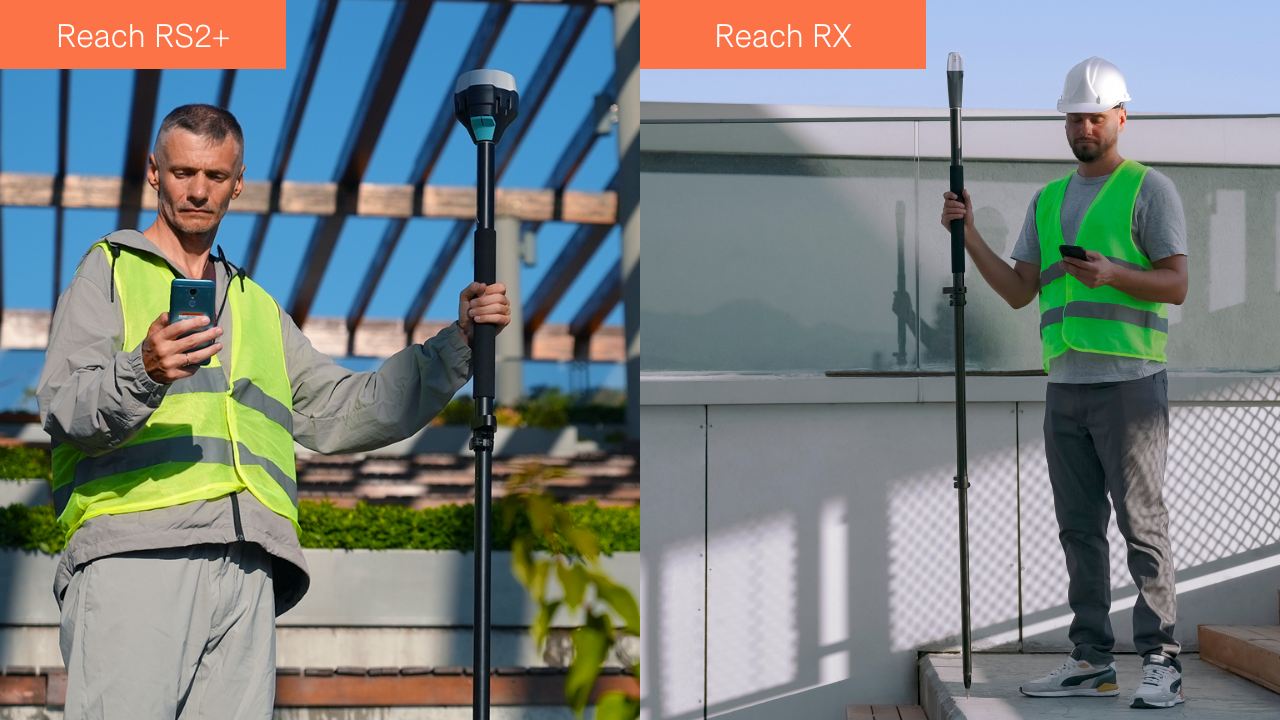
In summary, the Reach RX is a handy rover for RTK surveys in urban areas with cellular network coverage. Its pocket-sized format and simplicity with no settings make it an attractive surveying tool.
However, if you deal with various working conditions and need to survey in both RTK and PPK, then Reach RS2+ is the ideal solution.
heliguy™ has added the Emlid ecosystem to our surveying product range. To find out more about Emlid's solutions and to add them to your workflows, reach out to our in-house surveying team by emailing survey@heliguy.com
